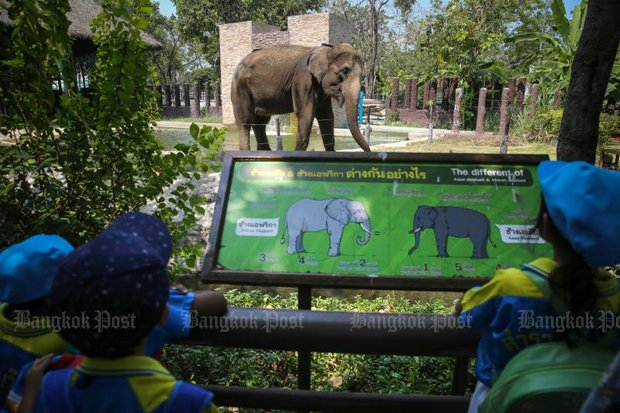
At the end of this month, Bangkokians will bid farewell to Dusit Zoo, as the final curtain falls for the site, treasured by many not just as a recreational edutainment place, but also as a vast green space in the heart of the capital.
Netizens over the past few weeks have been sharing fond memories of the site that has served visitors for more than six decades. The zoo is moving to a new 300-rai home in Klong 6, Pathum Thani's Thanyaburi district, which is three times the size of the present zoo. The land was given to the government by His Majesty King Maha Vajiralongkorn Bodindradebayavarangkun. Construction of the zoo is expected to begin next year or even later, and the opening is planned in the next three years.

The Aug 31 closure, which zoo authorities have insisted is part of their original work plan, implies there is no rush in the move, and will be followed by the animals' relocation.
There are more than 1,000 animals at the zoo. They will be sent to temporary shelters in state-run zoos in six provinces: Chon Buri in the Central region, Chiang Mai in the North, Khon Kaen and Ubon Ratchathani in the Northeast, and Songkhla in the South.
Zoo authorities have pledged to carry out the relocation with extreme care and they have previously promised the new site will be constructed under a "green zoo" concept as designs are to be based on each animal's natural habitat. With a vast area, the agency will be able to provide more space for animals in its care. It's likely the first batch of animals will be removed in three months.
But it remains unclear if it is a good idea to remove all the animals at this time of the year given the ongoing wet weather and, in particular, the possible threat of flooding in some provinces, especially the South.
Apart from that, animal relocation is a complicated task as those removed from their long-time home are subject to stress that weakens them with the possibility that some may not survive. Public curiosity is unavoidable since the zoo authorities have not shared with the public how they have prepared each relocation site to make it ready for the animals.
In fact, Thailand could take some lessons from Kenya. Last month the African nation suffered a big loss after 11 endangered black rhinos died in quick succession following their relocation carried out by the Kenya Wildlife Service. Under the relocation plan, which received financial support from the Kenyan branch of the World Wildlife Fund, 14 rhinos were to be moved from Nairobi National Park in the outskirts of the capital city and Lake Nakuru National Park to a new sanctuary in Tsavo East National Park to start a new population in the area.
The 11 deaths caused shock waves in conservation circles worldwide. According to media reports, the 11 dead rhinos were the first batch of an animal relocation effort that was completed in June. Of the total, 10 deaths were linked to dehydration as water at the new site was too salty for them, while the last rhino was unfortunately killed by a lion.
Experts say rhinos in healthy condition can normally defend themselves from lion attacks, but in this case the poor animal must have been too weak due to unfavourable conditions at the new site. It's understood that the usual 11 deaths prompted a suspension in the relocation effort as investigations get under way to find what went wrong in the process even though it was handled by top experts and veterinarians.
Back to Thailand, while the 300-rai size of the new site in Pathum Thani, compares favourably to the 118-rai size of the present site, questions still remain about the relocation process.
Apart from the unfavourable weather, moving the animals now means there will be two relocations in the process which means more risk of possible loss.
The number of animals is another area of concern. Does the zoo agency have enough manpower and equipment for such a demanding task?
More importantly, there is one pointed issue: what will become of the Dusit site when the zoo is closed? Those involved should be aware of its legacy, especially the fact that Dusit Zoo is part of Bangkok history. It was opened during in the reign of King Chulalongkorn for the use of members of the royal family and court officials initially as a botanical garden.
It was in the late 1930s that the public gained access to the site when the Pibulsonggram government obtained permission from King Ananda to make use of the area as a zoo. It was King Ananda who bestowed the name Dusit Zoo, as well as gifting a few star deer that the palace had received from Java, plus some other species.
Due to its prime location, it is a major recreational site for the public, especially those with low incomes. It also serves as a key green area, or "lung" of the city. It is hoped that such a legacy will remain even after the zoo is gone.
